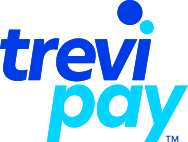TreviPay (formerly MSTS) is a global B2B payment and credit solutions provider specializing in commercial transaction management with customers in over 190 countries. TreviPay makes it much easier for merchants to interact with their customers and provide them with a better buying experience. TreviPay delivers innovative applications and services that enable companies to optimize B2B payment and credit processes.
TreviPay’s applications handle the B2B buyer flows from buyer qualification and onboarding to transaction authorization, settlement, billing and invoicing, and buyer payment. As you can imagine, these are critical business processes that TreviPay, Sellers, and Buyers depend on every day. Ensuring that the software works flawlessly is part of the QA team’s responsibilities at TreviPay.
We spoke with Jyoti Mittal, Quality Engineering Practice Lead, about the processes, best practices, and tools that help them ensure quality in their agile software delivery at TreviPay.
TreviPay’s agile development model
TreviPay has over 25 applications and more than a dozen agile delivery teams. Each team comprises a product owner, a delivery lead, a QA, and four to six developers. They follow a two-week sprint cycle, and every two weeks, they release code to production.
Jyoti is part of the technology leadership team responsible for driving the testing best practices, test automation processes, tools, and implementation. The quality practice establishes guidelines for the teams to follow, including test naming conventions, test configuration and how to use test status (draft, evaluating, quarantine, etc.). They also help with reusable code and test scripts that QAs can leverage across different applications.
Other examples of best practices include no hard coding of test data or credentials, including beta credentials. Instead, they pass the credentials through the GitLab CI/CD pipeline to the tests.
Finally, most tests are executed from the CI/CD pipeline, except for the scheduled large regression suites.

TreviPay’s journey to automation
TreviPay’s journey to automated testing started almost four years ago. They knew that they needed to move more of their manual tests to automation to enable quality to keep up with the fast pace of development. Every QA tester was required to help create automation.
In an agile environment, we cannot continue to do regressions manually. It’s not sustainable.
TreviPay assigns QA analysts to its different applications. They view automated QA and manual QA as part of the same role. The QAs determine the testing strategy for their project, including the degree to which they run automated versus manual tests.
At the enterprise practice level, TreviPay aims to increase the automation coverage levels for their programs. Jyoti and the leadership team prioritizes the development of technical skills for each QA. They’ve implemented training and programs to help QAs build the skills they need.
Jyoti added, “Testim has played a big role in reskilling our team. We started with some open source or free tools like Selenium, RSpec, and Katalon, but you still needed to know programming languages like Java, Ruby, etc.” With Testim, the teams could do most of the authoring without any coding and leverage shared, custom steps as needed.
Why Testim?
As a fast-moving FinTech company, TreviPay understands the need to optimize software development activities. They try to adopt best-of-breed tools wherever possible. TreviPay looked at several open source and vendor tools before selecting Testim.
The two primary reasons for choosing Testim were reduced test authoring time and lower maintenance costs. According to Jyoti, “the authoring time was at least 50% faster with Testim than with Katalon.”
Testim’s AI-powered smart locators help minimize the need to update tests for changes to the UI. Jyoti stated, “Even with tools like Katalon, if there were minor changes in the application, it required additional maintenance time to fix locators. With Testim, it’s at least 50% less maintenance.”
The amount of manual testing hours we saved by using Testim is incredible. And it’s not a one-time saving; we continue to leverage these efficiencies with every sprint and upgrade we are doing now.
One of the keys to successful test automation is building trust in the tests. If the test fails, it’s not a false positive that can delay releases as teams troubleshoot and repair tests. According to Jyoti, “The locator strategy that Testim uses plays a big role and is unique about Testim. More stable tests have helped the team build trust and drive lower maintenance.”
Jyoti discussed the importance of reducing flaky tests, saying, “People miss out on the big picture with automation. If you create unstable tests, there is no point in developing automation. Testim’s feature that identifies flaky tests saves me a lot of time, knowing what tests need to be updated.”
The team at TreviPay also appreciates the “test status” feature. Jyoti stated that many large companies create specialized delivery pipelines for quarantined or unstable tests. “It was like a dream come true when Testim implemented test status. You don’t have to customize and create a separate process; Testim built it into the tool. Now that we have 1000 tests, it’s an invaluable feature,” said Jyoti.
Milestone Success
The TreviPay team recently celebrated a significant milestone migrating their on-prem apps to the cloud. TreviPay started this process around two years ago and began using Testim shortly afterward. According to Jyoti, “Testim gave us the ability to author the test cases faster. The project required rigorous regression testing, and Testim played a big role in supporting this migration testing.” Adoption of Testim was swift. TreviPay started using Testim for two or three applications and quickly expanded that usage to over 18 applications supporting the migration.
Benefits:
- Faster scripting/authoring time—by 50% compared to other tools.
-
Reduced maintenance due to the AI and smart locators by 50% over competitors
-
The learning curve was small, even for manual testers who have never done programming. It enabled users to scale regression tests quickly.
- Testim webinars and documentation speed onboarding
- Account managers and customer success managers are supporting
- The chat service is speedy and responsive
- Engineers and QA work together and can backfill each other.





